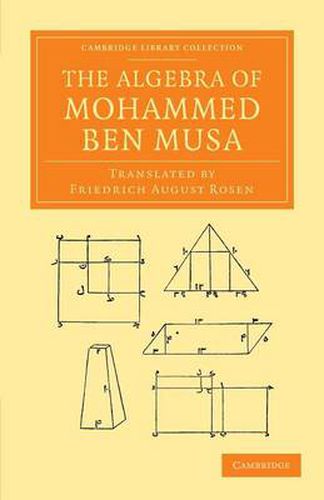Readings Newsletter
Become a Readings Member to make your shopping experience even easier.
Sign in or sign up for free!
You’re not far away from qualifying for FREE standard shipping within Australia
You’ve qualified for FREE standard shipping within Australia
The cart is loading…






Mohammed ben Musa (c.780-c.850) was a Persian mathematician and astronomer. The word ‘algebra’ derives from his Compendious Book on Calculation by Completion and Balancing, which introduced modern algebraic methods. First published in 1831, this translation from Arabic into English was prepared by the German orientalist Friedrich August Rosen (1805-37). The key algebraic methods introduced are reduction, completion and balancing. To reduce an equation is to change an expression to a simpler form; completion is to remove a negative quantity from one side of the equation and add it to the other; and balancing is to cancel like terms on opposite sides of the equation. An account is also given of solving polynomial equations up to the second degree. Rosen’s introduction and notes accompany the translation, which remains relevant in the history of mathematics.
$9.00 standard shipping within Australia
FREE standard shipping within Australia for orders over $100.00
Express & International shipping calculated at checkout
Mohammed ben Musa (c.780-c.850) was a Persian mathematician and astronomer. The word ‘algebra’ derives from his Compendious Book on Calculation by Completion and Balancing, which introduced modern algebraic methods. First published in 1831, this translation from Arabic into English was prepared by the German orientalist Friedrich August Rosen (1805-37). The key algebraic methods introduced are reduction, completion and balancing. To reduce an equation is to change an expression to a simpler form; completion is to remove a negative quantity from one side of the equation and add it to the other; and balancing is to cancel like terms on opposite sides of the equation. An account is also given of solving polynomial equations up to the second degree. Rosen’s introduction and notes accompany the translation, which remains relevant in the history of mathematics.